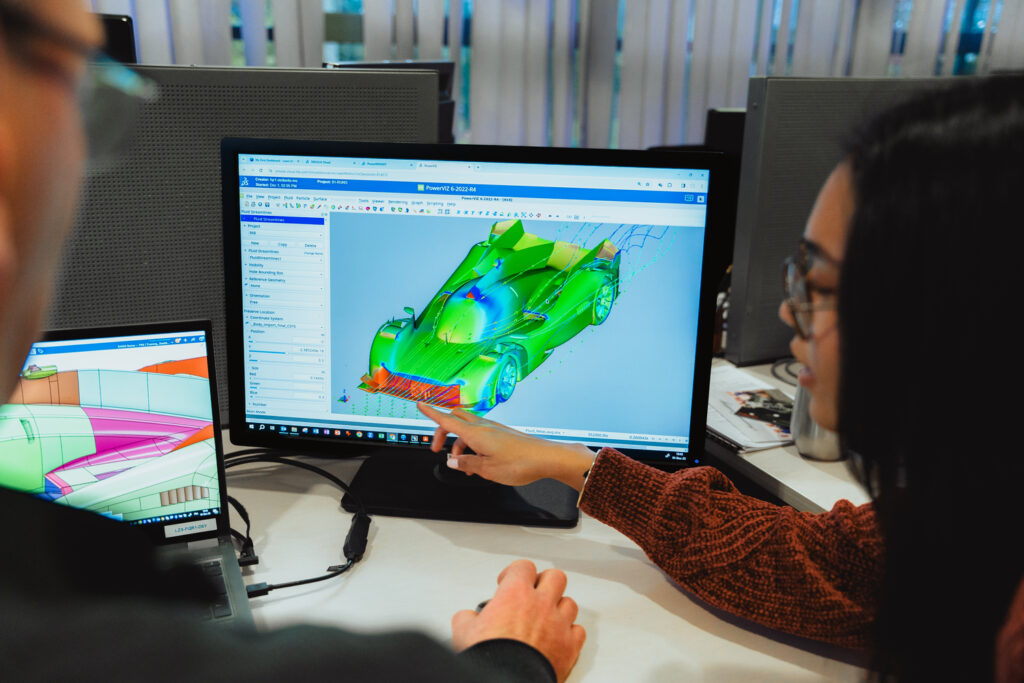Vehicle Dynamics
While in Detroit last year, I was looking at the large number of cars on the road and I started wondering how much an average person drives his or her car throughout the year. When I checked online for some facts, I found out that an average American drives around 13,000 miles per year, which is equivalent to 300 hours of driving. Have you ever wondered why you get so tired after driving your car for a long time and how you can prevent that from happening?
The low quality of ride experienced in a car could be due to the low frequency movements of the suspension system. Road bumps also lead to seat vibrations. The human body is sensitive to these vibrations, and these disturbances experienced by our body can lead to fatigue. One effective way to reduce the impact of these disturbances is to tune the suspension system to minimize the vibrations transmitted to the occupants of the car.
The safety of the occupants inside the car is directly associated with the handling characteristics of the car. To have a safe journey, it’s not just the airbag and seat belts that save you in accidents. There are many electronic controllers and sensors in the car that are also working continuously to help prevent accidents and protect the occupants. In this article, we discuss one such controller and how it can lower the risk of vehicle crash.
The handling performance of the car is governed by the tires fitted on the wheels. The tires are the only components that come in direct contact with the road surface. While taking turns, the car has a tendency to roll and the tires can play an important role in minimizing this.
The Model Build Phase
At Dassault Systèmes we have built our own detailed model of a car that we call the Bleu Car, which you can see in the pictures in this post. To investigate the handling of this car, we quickly built a model of the car’s suspension system with the help of Simpack Wizard. And when I say quick , it literally took us just a few minutes. That’s pretty amazing!
The Wizard is structured in multiple hierarchical levels with each substructure automatically connected from bottom to top to generate the complete vehicle model. The body, suspension, steering, tires, chassis, driveline, and powertrain systems were all considered in this model.
Since our geometry model was built on the 3DEXPERIENCE platform, we quickly leveraged data such as mass, position, center of gravity, and other such inertia properties and imported this information into the Simpack model. Thus, we had a rich Master Model built for this car, which could then be re-used for various vehicle dynamics workflows. Cool, isn’t it!
We also did some quick model integrity checks to ensure accuracy in our workflows and results.
A Kinematic and Compliance test was done to validate the suspension geometry angles using target curves. The unsprung mass gave us an idea on how the car handling could be improved if the mass is on the higher side. Statics gave us an idea of the tire forces, wheel base, and track width, as well as mass inertia properties at equilibrium conditions.
We worked on the following ride and handling aspects of the Bleu Car:
For the handling simulation, we chose the TMeasy mathematical tire model. TMeasy is a semi-physical tire model used for low frequency applications to describe the tire-road contact.
We integrated the mechatronic controller, or Electronic Stability Control, which can lower the risk of fatal single-vehicle crashes by 56%. The ESC system can improve vehicle stability by sensing vehicle body positions and comparing them to the steering angle. It then automatically interacts with the brakes and applies them independently to regain steering control.
For the handling analysis, the Body-In-White is modeled as a rigid body. However, while performing the ride analysis, we switched the Body-In-White from being rigid to a flexible body. The flex body was created using Abaqus substructuring. This body underwent deformations represented by mode shapes so that we could measure accurate accelerations on the driver seat mounts.
Observations:
- After performing a Design of Experiments study on the spring and damper parameters, we were able to achieve a 25% reduction in seat vibrations (peak-to-peak).
- We analyzed the effect of Electronic Stability Control (ESC) on Car stability by adding an FMU (Functional Mock-up) of the ESC system to the model and overlaid the results. It showed that the car with ESC was much more stable while turning than the one without it.
- Vehicle body roll is the load transfer of a vehicle towards the outside of a turn. We improved the tire stiffness resulting in a 10% reduction of vehicle body roll while taking a turn.
In summary, reducing the seat vibrations, improving the car stability, and reducing the body roll all lead to a better car design that reduces body fatigue and improves safety for the occupants. These improvements yield cars that are fun and easy to drive, and they make the driving experience much more enjoyable.
Horsepower isn’t the only thing that makes these dream machines great. It can come from comfort, smooth riding and fun as well!
See our vehicle dynamics solutions by visiting: https://www.3ds.com/products-services/simulia/solutions/transportation-mobility/vehicle-dynamics-performance/
By









